The Economics and Statistics Division maintains archives of previous publications for accountability purposes, but makes no updates to keep these documents current with the latest data revisions from Statistics Canada. As a result, information in older documents may not be accurate. Please exercise caution when referring to older documents. For the latest information and historical data, please contact the individual listed to the right.
<--- Return to Archive
For additional information relating to this article, please contact:
September 09, 2020HOUSING STARTS, AUGUST 2020 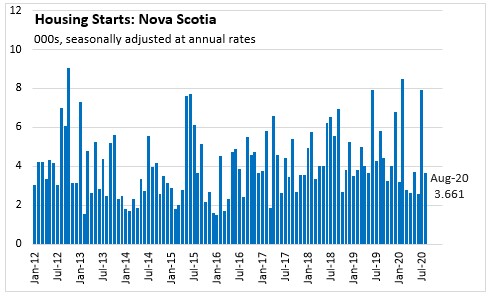
Nova Scotia's housing starts (seasonally adjusted annualized rate) totalled 3,661 in August 2020, down by 53.8 per cent from 7,927 in July 2020. Compared to August 2019, Nova Scotia housing starts were lower by 37.0 per cent.
Housing starts lowered by 69.2 per cent in Halifax from 6,668 in July 2020 to 2,055 in August 2020. Halifax starts were down by 42.1 per cent compared to August 2019.
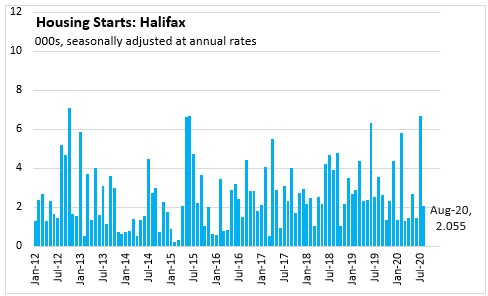
Outside Halifax, Nova Scotia's housing starts were up by 27.6 per cent from 1,259 in July 2020 to 1,606 in August 2020. Compared to August 2019, housing starts outside Halifax were lower by 29.0 per cent.
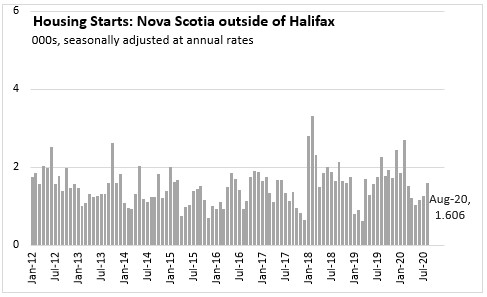
The six-month moving average of housing starts in Nova Scotia and Halifax shows similar trends. Following an upwards trend in summer months, housing starts have been trending down since fall 2019. The trends outside Halifax are different, with a rise in starts over the second half of 2019 followed by a decline since the start of 2020.

In urban areas, housing starts for multiples are generally higher than for singles with greater variability month-to-month. The six-month moving average for singles was increasing since the first quarter of 2019, but has declined in recent months. The pace of multiple starts in urban areas has been more volatile, with peaks in summer of 2018 and summer of 2019.
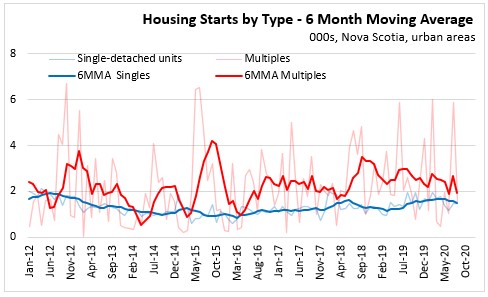
Nationally, housing starts increased 6.9 per cent to 262,396 in August 2020 compared to 245,425 in July 2020. Among all provinces, Prince Edward Island posted the highest monthly increase (+248.8 per cent) while Saskatchewan experiences the largest monthly decrease (-62.5 per cent) in housing starts in August 2020.
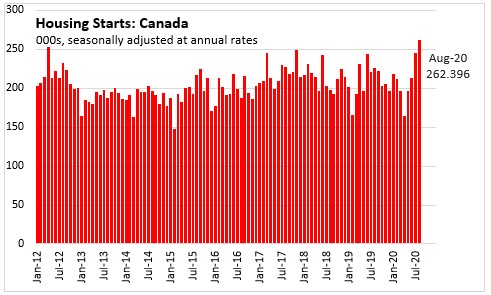

In Jan-Aug 2020, housing starts were down 7.7 per cent in Nova Scotia compared to Jan-Aug 2019. Compared to Jan-Aug 2019, housing starts were up 1.7 per cent across Canada. Five provinces reported annual housing starts were up with Saskatchewan posting the largest increase (+49.0 per cent). Housing starts were down in five provinces led by British Columbia posting the largest decline (-19.5 per cent).
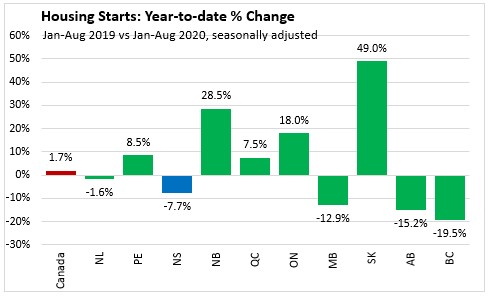
During the COVID-19 pandemic, housing starts declined in all provinces, falling below 10-year averages (2010-2019).
August housing starts for Canada were 30.4 per cent above their 10-year average and 5 of 10 provinces reported above average housing starts. The largest increases in housing starts (relative to the 10-year average) were reported in Prince Edward Island (+171.2 per cent), New Brunswick (+69.2 per cent) and Ontario (+64.6 per cent). The largest declines in housing starts (relative to the 10-year average) were reported in Newfoundland and Labrador (-57.9 per cent), Saskatchewan (-49.2 per cent) and Alberta (-35.1 per cent).
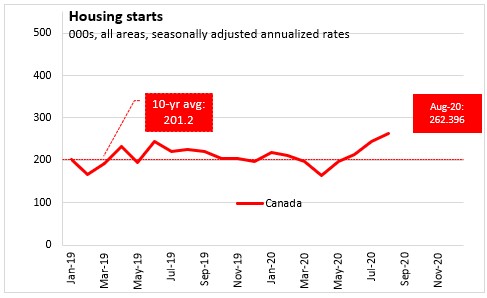

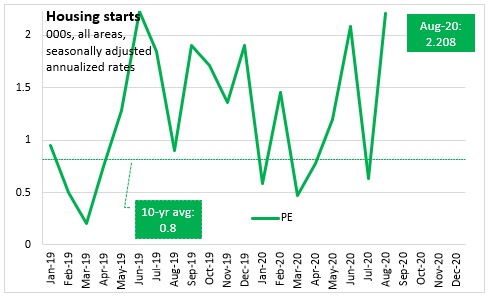
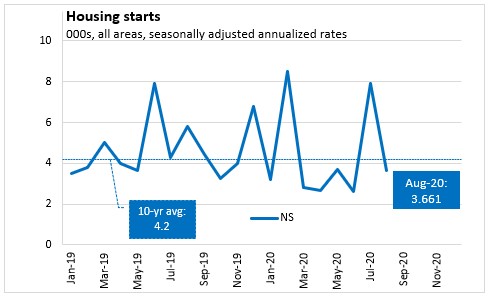
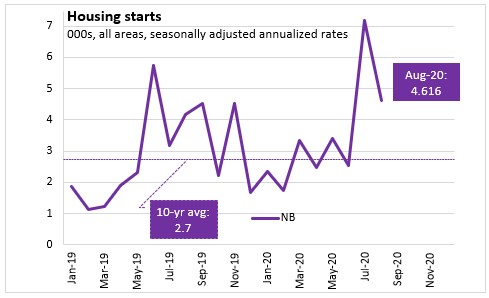
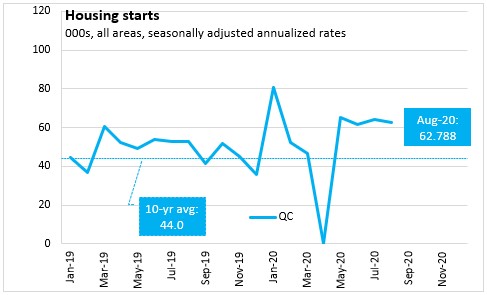
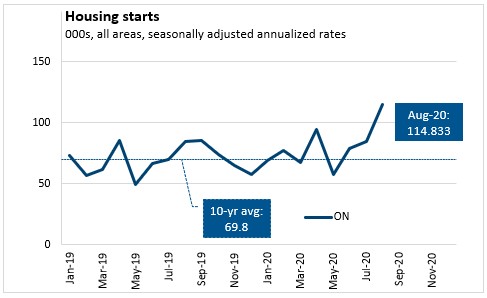
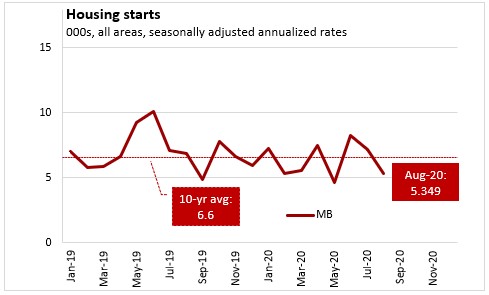
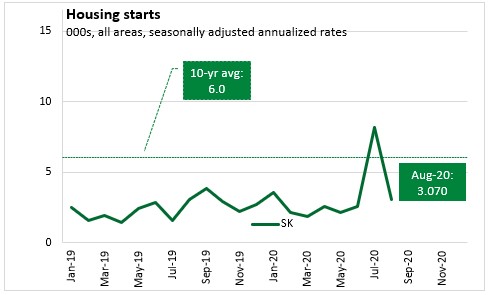
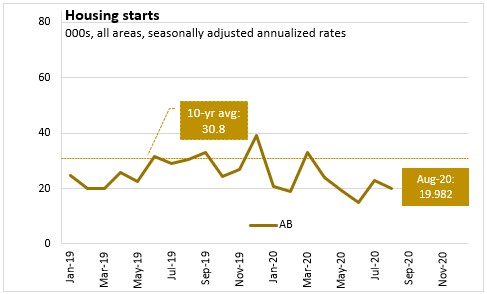
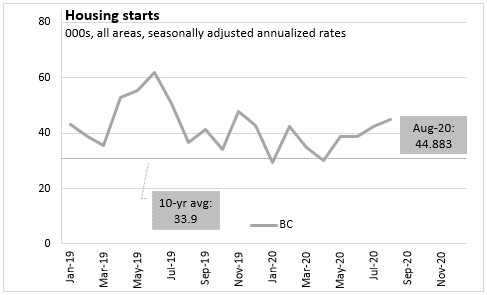
Note: Urban areas are defined as areas over 10,000 people
Source: Statistics Canada, Table 34-10-0158-01 Canada Mortgage and Housing Corporation, housing starts, all areas, Canada and provinces, seasonally adjusted at annual rates, monthly (x 1,000)
Table 34-10-0156-01 Canada Mortgage and Housing Corporation, housing starts in all centres 10,000 and over, Canada, provinces, and census metropolitan areas, seasonally adjusted at annual rates, monthly (x 1,000)
<--- Return to Archive